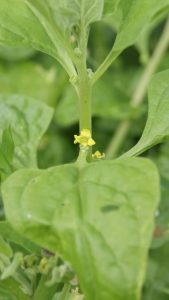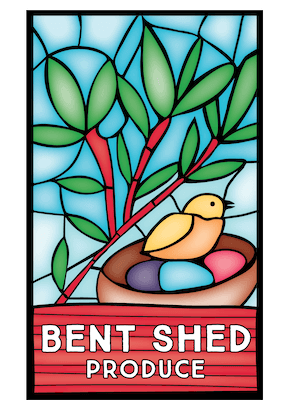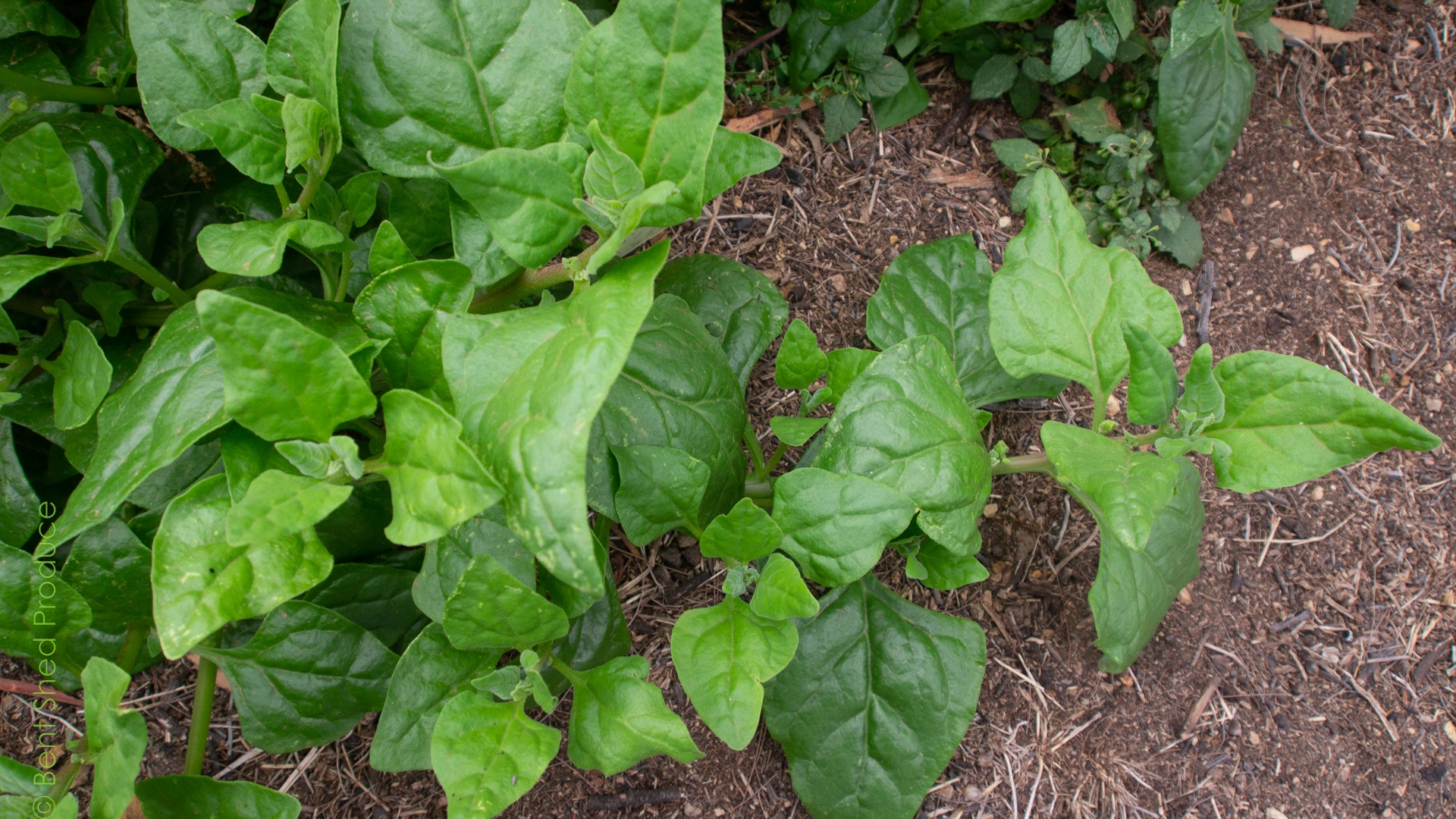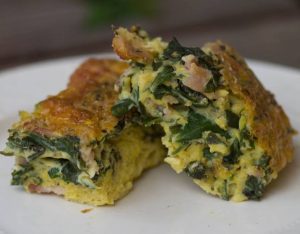Lush spinachy leaves
Australia’s answer to English spinach, except it grows year-round and doesn’t have that cabbagy bitterness.
Also Botany Bay Greens, New Zealand Spinach (it’s indigenous to NZ as well), or Tetragon (by the French). Related variety, also edible, is known as Bower spinach.
Latin name: Tetragonia tetragonides, Tetragonia implexicoma (Bower spinach).
Eating
- Must be blanched before eating – place in boiling water for one minute, or place in a bowl and pour boiling water over it and let sit for at least 5 minutes.
- Doesn’t shrink down like English spinach does, and retains a lovely plump mouthful even after cooking.
- Use in the same way as English spinach – excellent in quiches, pasta sauces, and stir-fries, or served plainly with butter/oil and some nutmeg.
- Makes a good pesto, and a surprisingly sweet, rich green bread or pasta.
- Leaves are best, but the top 15cm or so of the stems can be cooked as well.
- Do not eat the seed cases! They are very hard and not at all nice.
- Well-liked by poultry, goats, and other livestock. Don’t feed often, due to the oxalate levels, but a little now and again shouldn’t harm.
Growing
- Warrigal greens have naturalised extremely well on our property south of Goulburn. In general, our response to the question “how do you grow warrigal greens?” is a wry “A better question is how to stop it growing??!”. It’s practically a weed, now, except it’s so useful and amenable. We’re very fond of it, in an exasperated sort of way.
- Has a tiny yellow flower and heart-shaped leaves that range in size from baby-spinach-sized larger than a human hand.

- A ground plant with long runners.
- Has a single small root – while the runners climb (or more accurately scramble) to an extent, they do not root and are not invasive, and they are easy to pull out when they’ve taken over too much.
- Technically a coastal plant, but grows readily in heavy and sandy soils.
- Can be frost-tolerant if it has naturalised in a frosty area. However, may die back to very small, yellow leaves in August and September if the frosts are heavy.
- Self-seeds and naturalises very readily.
- Seedlings will pop up any time, but the main flush is after the first good rain in Spring – between late September and November.

- Excellent living mulch; keeps soil cool and damp, and creates its own microclimate for future planting uses.
- We often use it to protect more delicate plants such as finger limes from winter frost and summer heatwaves.
- Does not like to dry out when being re-planted – keep damp for at least two weeks after transplanting. Like many native plants, doesn’t like being transplanted at larger ages.
Harvesting and storage
- Treat exactly like any other leafy green.
- Harvest when required.
- Keeps fresh in the fridge, ideally in a plastic bag, for 7-10 days.
- Does not freeze when fresh; however, like spinach, will freeze quite well once blanched/cooked.
Historical notes
- The European sea captain Cook used the leaves when he visited the southern oceans – firstly in Aotearoa (New Zealand) and then in Kamay (Botany Bay, Australia) in 1770AD.
More information
- The vegetable Australia gave the world. By Tim Low. Australian Geographic, October 17, 2017


